-
4.8 点+ 箱型图
-
4.9 小提琴图
-
4.10 人口金字塔
-
4.11 分类图
!pip install brewer2mpl
import numpy as np
import pandas as pd
import matplotlib as mpl
import matplotlib.pyplot as plt
import seaborn as sns
import warnings; warnings.filterwarnings(action=‘once’)
large = 22; med = 16; small = 12
params = {‘axes.titlesize’: large,
‘legend.fontsize’: med,
‘figure.figsize’: (16, 10),
‘axes.labelsize’: med,
‘axes.titlesize’: med,
‘xtick.labelsize’: med,
‘ytick.labelsize’: med,
‘figure.titlesize’: large}
plt.rcParams.update(params)
plt.style.use(‘seaborn-whitegrid’)
sns.set_style(“white”)
%matplotlib inline
mac font
plt.rcParams[‘font.sans-serif’] = [‘Arial Unicode MS’]
windows font
plt.rcParams[‘font.sans-serif’] = [‘SimHei’]
Version
print(mpl.version) #> 3.0.0
print(sns.version) #> 0.9.0
相关下的图用于可视化两个或多个变量之间的关系。即,一个变量相对于另一个如何变化。
1.1 散点图
Scatteplot是用于研究两个变量之间关系的经典基础图。如果数据中有多个组,则可能需要以不同的颜色可视化每个组。在中matplotlib,您可以使用方便地执行此操作
Import dataset
midwest = pd.read_csv(“data/midwest_filter.csv”)
Prepare Data
Create as many colors as there are unique midwest[‘category’]
categories = np.unique(midwest[‘category’])
colors = [plt.cm.tab10(i/float(len(categories)-1)) for i in range(len(categories))]
print(colors)
Draw Plot for Each Category
plt.figure(figsize=(16, 10), dpi= 80, facecolor=‘w’, edgecolor=‘k’)
for i, category in enumerate(categories):
plt.scatter(‘area’, ‘poptotal’,
data=midwest.loc[midwest.category==category, :],
s=30, c=colors[i], label=str(category))
Decorations
plt.gca().set(xlim=(0.0, 0.1), ylim=(0, 90000),
xlabel=‘面积’, ylabel=‘人口’)
plt.xticks(fontsize=16); plt.yticks(fontsize=16)
plt.title(“散点图:中西部城市面积与人口的关系”, fontsize=22)
plt.legend(fontsize=12)
plt.show()
1.2 气泡图
有时想在边界内显示一组点以强调其重要性。在此示例中,您从应该环绕的数据框中获取记录,并将其传递给下面的代码中所述
[外链图片转存失败,源站可能有防盗链机制,建议将图片保存下来直接上传(img-jm3dvaIc-1588929515286)(https://imgkr.cn-bj.ufileos.com/4d3a28d3-077f-4290-8d2b-963f5bcf02ad.png)]
from matplotlib import patches
from scipy.spatial import ConvexHull
import warnings; warnings.simplefilter(‘ignore’)
sns.set_style(“white”)
plt.rcParams[‘font.sans-serif’] = [‘Arial Unicode MS’]
Step 1: Prepare Data
midwest = pd.read_csv(“data/midwest_filter.csv”)
As many colors as there are unique midwest[‘category’]
categories = np.unique(midwest[‘category’])
colors = [plt.cm.tab10(i/float(len(categories)-1)) for i in range(len(categories))]
Step 2: Draw Scatterplot with unique color for each category
fig = plt.figure(figsize=(16, 10), dpi= 80, facecolor=‘w’, edgecolor=‘k’)
for i, category in enumerate(categories):
plt.scatter(‘area’, ‘poptotal’, data=midwest.loc[midwest.category==category, :], s=‘dot_size’, c=colors[i], label=str(category), edgecolors=‘black’, linewidths=.5)
Step 3: Encircling
https://stackoverflow.com/questions/44575681/how-do-i-encircle-different-data-sets-in-scatter-plot
def encircle(x,y, ax=None, **kw):
if not ax: ax=plt.gca()
p = np.c_[x,y]
hull = ConvexHull§
poly = plt.Polygon(p[hull.vertices,:], **kw)
ax.add_patch(poly)
Select data to be encircled
midwest_encircle_data = midwest.loc[midwest.state==‘IN’, :]
Draw polygon surrounding vertices
encircle(midwest_encircle_data.area, midwest_encircle_data.poptotal, ec=“k”, fc=“gold”, alpha=0.1)
encircle(midwest_encircle_data.area, midwest_encircle_data.poptotal, ec=“firebrick”, fc=“none”, linewidth=1.5)
Step 4: Decorations
plt.gca().set(xlim=(0.0, 0.1), ylim=(0, 90000),
xlabel=‘面积’, ylabel=‘人口’)
plt.xticks(fontsize=12); plt.yticks(fontsize=12)
plt.title(“气泡图”, fontsize=22)
plt.legend(fontsize=12)
plt.show()
1.3 散点图与最佳拟合线
如果您想了解两个变量如何相对变化,则最好的方法就是拟合
Import Data
df = pd.read_csv(“data/mpg_ggplot2.csv”)
df_select = df.loc[df.cyl.isin([4,8]), :]
Plot
sns.set_style(“white”)
gridobj = sns.lmplot(x=“displ”, y=“hwy”, hue=“cyl”, data=df_select,
height=7, aspect=1.6, robust=True, palette=‘tab10’,
scatter_kws=dict(s=60, linewidths=.7, edgecolors=‘black’))
Decorations
gridobj.set(xlim=(0.5, 7.5), ylim=(0, 50))
plt.title(“Scastterplot with line of best fit grouped by number of cylinders”, fontsize=20)
plt.show()
1.4 带状抖动图
通常,多个数据点具有完全相同的X和Y值。结果,多个点相互绘制并隐藏。为避免这种情况,请稍微抖动点,以便您可以直观地看到它们
Import Data
df = pd.read_csv(“data/mpg_ggplot2.csv”)
Draw Stripplot
fig, ax = plt.subplots(figsize=(16,10), dpi= 80)
sns.stripplot(df.cty, df.hwy, jitter=0.25, size=8, ax=ax, linewidth=.5)
Decorations
plt.title(‘Use jittered plots to avoid overlapping of points’, fontsize=22)
plt.show()
1.5 计数图
避免点重叠问题的另一种选择是增加点的大小,具体取决于该点上有多少点。因此,点的大小越大,周围的点的集中度就越大。
[外链图片转存失败,源站可能有防盗链机制,建议将图片保存下来直接上传(img-5Ufmzc21-1588929515288)(https://imgkr.cn-bj.ufileos.com/a469cb4c-cd01-4f91-ab47-fcffda3a37ed.png)]
Import Data
df = pd.read_csv(“data/mpg_ggplot2.csv”)
df_counts = df.groupby([‘hwy’, ‘cty’]).size().reset_index(name=‘counts’)
Draw Stripplot
fig, ax = plt.subplots(figsize=(16,10), dpi= 80)
sns.stripplot(df_counts.cty, df_counts.hwy, size=df_counts.counts*2, ax=ax)
Decorations
plt.title(‘Counts Plot - Size of circle is bigger as more points overlap’, fontsize=22)
plt.show()
1.6 边际直方图
边际直方图沿X和Y轴变量具有直方图。这用于可视化X和Y之间的关系以及X和Y的单变量分布。如果经常在探索性数据分析(EDA)中使用此图。
Import Data
df = pd.read_csv(“data/mpg_ggplot2.csv”)
Create Fig and gridspec
fig = plt.figure(figsize=(16, 10), dpi= 80)
grid = plt.GridSpec(4, 4, hspace=0.5, wspace=0.2)
Define the axes
ax_main = fig.add_subplot(grid[:-1, :-1])
ax_right = fig.add_subplot(grid[:-1, -1], xticklabels=[], yticklabels=[])
ax_bottom = fig.add_subplot(grid[-1, 0:-1], xticklabels=[], yticklabels=[])
Scatterplot on main ax
ax_main.scatter(‘displ’, ‘hwy’, s=df.cty*4, c=df.manufacturer.astype(‘category’).cat.codes, alpha=.9, data=df, cmap=“tab10”, edgecolors=‘gray’, linewidths=.5)
histogram on the right
ax_bottom.hist(df.displ, 40, histtype=‘stepfilled’, orientation=‘vertical’, color=‘deeppink’)
ax_bottom.invert_yaxis()
histogram in the bottom
ax_right.hist(df.hwy, 40, histtype=‘stepfilled’, orientation=‘horizontal’, color=‘deeppink’)
Decorations
ax_main.set(title=‘Scatterplot with Histograms \n displ vs hwy’, xlabel=‘displ’, ylabel=‘hwy’)
ax_main.title.set_fontsize(20)
for item in ([ax_main.xaxis.label, ax_main.yaxis.label] + ax_main.get_xticklabels() + ax_main.get_yticklabels()):
item.set_fontsize(14)
xlabels = ax_main.get_xticks().tolist()
ax_main.set_xticklabels(xlabels)
plt.show()
1.7 边际箱型图
边际箱线图的作用类似于边际直方图。但是,箱形图有助于查明X和Y的中位数,第25和第75个百分位数
[外链图片转存失败,源站可能有防盗链机制,建议将图片保存下来直接上传(img-dasYTrY8-1588929515289)(https://imgkr.cn-bj.ufileos.com/3d3d0a9f-0407-4c31-8ea5-8952bb0959dc.png)]
Import Data
df = pd.read_csv(“data/mpg_ggplot2.csv”)
Create Fig and gridspec
fig = plt.figure(figsize=(16, 10), dpi= 80)
grid = plt.GridSpec(4, 4, hspace=0.5, wspace=0.2)
Define the axes
ax_main = fig.add_subplot(grid[:-1, :-1])
ax_right = fig.add_subplot(grid[:-1, -1], xticklabels=[], yticklabels=[])
ax_bottom = fig.add_subplot(grid[-1, 0:-1], xticklabels=[], yticklabels=[])
Scatterplot on main ax
ax_main.scatter(‘displ’, ‘hwy’, s=df.cty*5, c=df.manufacturer.astype(‘category’).cat.codes, alpha=.9, data=df, cmap=“Set1”, edgecolors=‘black’, linewidths=.5)
Add a graph in each part
sns.boxplot(df.hwy, ax=ax_right, orient=“v”)
sns.boxplot(df.displ, ax=ax_bottom, orient=“h”)
Decorations ------------------
Remove x axis name for the boxplot
ax_bottom.set(xlabel=‘’)
ax_right.set(ylabel=‘’)
Main Title, Xlabel and YLabel
ax_main.set(title=‘Scatterplot with Histograms \n displ vs hwy’, xlabel=‘displ’, ylabel=‘hwy’)
Set font size of different components
ax_main.title.set_fontsize(20)
for item in ([ax_main.xaxis.label, ax_main.yaxis.label] + ax_main.get_xticklabels() + ax_main.get_yticklabels()):
item.set_fontsize(14)
plt.show()
1.8 相关图
关联图用于直观地查看给定数据帧(或2D数组)中所有可能的数字变量对之间的相关性度量。
[外链图片转存失败,源站可能有防盗链机制,建议将图片保存下来直接上传(img-MAY2sJfR-1588929515290)(https://imgkr.cn-bj.ufileos.com/07319caa-7724-41d3-bc0e-2c4b7fc2e4dd.png)]
Import Dataset
df = pd.read_csv(“data/mtcars.csv”)
Plot
plt.figure(figsize=(12,10), dpi= 80)
sns.heatmap(df.corr(), xticklabels=df.corr().columns, yticklabels=df.corr().columns, cmap=‘RdYlGn’, center=0, annot=True)
Decorations
plt.title(‘Correlogram of mtcars’, fontsize=22)
plt.xticks(fontsize=12)
plt.yticks(fontsize=12)
plt.show()
1.9 成对图
在理解分析中所有可能的数字变量对之间的关系时,成对绘图是最喜欢的。它是用于双变量分析的必备工具
Load Dataset
df = sns.load_dataset(‘iris’)
Plot
plt.figure(figsize=(10,8), dpi= 80)
sns.pairplot(df, kind=“scatter”, hue=“species”, plot_kws=dict(s=80, edgecolor=“white”, linewidth=2.5))
plt.show()
Load Dataset
df = sns.load_dataset(‘iris’)
Plot
plt.figure(figsize=(10,8), dpi= 80)
sns.pairplot(df, kind=“reg”, hue=“species”)
plt.show()
2.1 发散型条形图
如果要查看项目基于单个度量标准的变化方式并可视化此变化的顺序和数量,则分叉条是一个很好的工具。它有助于快速区分数据中组的性能,并且非常直观,可以立即传达要点。
Prepare Data
df = pd.read_csv(“data/mtcars.csv”)
x = df.loc[:, [‘mpg’]]
df[‘mpg_z’] = (x - x.mean())/x.std()
df[‘colors’] = [‘red’ if x < 0 else ‘green’ for x in df[‘mpg_z’]]
df.sort_values(‘mpg_z’, inplace=True)
df.reset_index(inplace=True)
Draw plot
plt.figure(figsize=(14,10), dpi= 80)
plt.hlines(y=df.index, xmin=0, xmax=df.mpg_z, color=df.colors, alpha=0.4, linewidth=5)
Decorations
plt.gca().set(ylabel=‘ M o d e l Model Model’, xlabel=‘ M i l e a g e Mileage Mileage’)
plt.yticks(df.index, df.cars, fontsize=12)
plt.title(‘Diverging Bars of Car Mileage’, fontdict={‘size’:20})
plt.grid(linestyle=‘–’, alpha=0.5)
plt.show()
2.2 发散型文本
分隔文本类似于分隔条,如果您希望以一种美观和可表达的方式显示图表中每个项目的值,则首选文本。
[外链图片转存失败,源站可能有防盗链机制,建议将图片保存下来直接上传(img-JWiNgYZA-1588929515292)(https://imgkr.cn-bj.ufileos.com/a737590f-102b-4730-9a81-0585d9331c76.png)]
Prepare Data
df = pd.read_csv(“data/mtcars.csv”)
x = df.loc[:, [‘mpg’]]
df[‘mpg_z’] = (x - x.mean())/x.std()
df[‘colors’] = [‘red’ if x < 0 else ‘green’ for x in df[‘mpg_z’]]
df.sort_values(‘mpg_z’, inplace=True)
df.reset_index(inplace=True)
Draw plot
plt.figure(figsize=(14,14), dpi= 80)
plt.hlines(y=df.index, xmin=0, xmax=df.mpg_z)
for x, y, tex in zip(df.mpg_z, df.index, df.mpg_z):
t = plt.text(x, y, round(tex, 2), horizontalalignment=‘right’ if x < 0 else ‘left’,
verticalalignment=‘center’, fontdict={‘color’:‘red’ if x < 0 else ‘green’, ‘size’:14})
Decorations
plt.yticks(df.index, df.cars, fontsize=12)
plt.title(‘Diverging Text Bars of Car Mileage’, fontdict={‘size’:20})
plt.grid(linestyle=‘–’, alpha=0.5)
plt.xlim(-2.5, 2.5)
plt.show()
2.3 发散型散点图
发散点图也类似于发散条。但是,与散布条相比,条的不存在会降低组之间的对比度和差异。
[外链图片转存失败,源站可能有防盗链机制,建议将图片保存下来直接上传(img-MqUvA7ZN-1588929515293)(https://imgkr.cn-bj.ufileos.com/3be5f9f6-964a-46d3-a9b1-3421b85ba1de.png)]
Prepare Data
df = pd.read_csv(“data/mtcars.csv”)
x = df.loc[:, [‘mpg’]]
df[‘mpg_z’] = (x - x.mean())/x.std()
df[‘colors’] = [‘red’ if x < 0 else ‘darkgreen’ for x in df[‘mpg_z’]]
df.sort_values(‘mpg_z’, inplace=True)
df.reset_index(inplace=True)
Draw plot
plt.figure(figsize=(14,16), dpi= 80)
plt.scatter(df.mpg_z, df.index, s=450, alpha=.6, color=df.colors)
for x, y, tex in zip(df.mpg_z, df.index, df.mpg_z):
t = plt.text(x, y, round(tex, 1), horizontalalignment=‘center’,
verticalalignment=‘center’, fontdict={‘color’:‘white’})
Decorations
Lighten borders
plt.gca().spines[“top”].set_alpha(.3)
plt.gca().spines[“bottom”].set_alpha(.3)
plt.gca().spines[“right”].set_alpha(.3)
plt.gca().spines[“left”].set_alpha(.3)
plt.yticks(df.index, df.cars)
plt.title(‘Diverging Dotplot of Car Mileage’, fontdict={‘size’:20})
plt.xlabel(‘ M i l e a g e Mileage Mileage’)
plt.grid(linestyle=‘–’, alpha=0.5)
plt.xlim(-2.5, 2.5)
plt.show()
2.4 带有标记棒棒糖图
带有标记的棒棒糖提供了一种灵活的方式来可视化差异,方法是将重点放在您要引起注意的重要数据点上,并在图表中适当地进行推理。
[外链图片转存失败,源站可能有防盗链机制,建议将图片保存下来直接上传(img-EgQRKDzB-1588929515293)(https://imgkr.cn-bj.ufileos.com/dc986d04-1368-4f75-a27d-2190e8ff85d8.png)]
Prepare Data
df = pd.read_csv(“data/mtcars.csv”)
x = df.loc[:, [‘mpg’]]
df[‘mpg_z’] = (x - x.mean())/x.std()
df[‘colors’] = ‘black’
color fiat differently
df.loc[df.cars == ‘Fiat X1-9’, ‘colors’] = ‘darkorange’
df.sort_values(‘mpg_z’, inplace=True)
df.reset_index(inplace=True)
Draw plot
import matplotlib.patches as patches
plt.figure(figsize=(14,16), dpi= 80)
plt.hlines(y=df.index, xmin=0, xmax=df.mpg_z, color=df.colors, alpha=0.4, linewidth=1)
plt.scatter(df.mpg_z, df.index, color=df.colors, s=[600 if x == ‘Fiat X1-9’ else 300 for x in df.cars], alpha=0.6)
plt.yticks(df.index, df.cars)
plt.xticks(fontsize=12)
Annotate
plt.annotate(‘Mercedes Models’, xy=(0.0, 11.0), xytext=(1.0, 11), xycoords=‘data’,
fontsize=15, ha=‘center’, va=‘center’,
bbox=dict(boxstyle=‘square’, fc=‘firebrick’),
arrowprops=dict(arrowstyle=‘-[, widthB=2.0, lengthB=1.5’, lw=2.0, color=‘steelblue’), color=‘white’)
Add Patches
p1 = patches.Rectangle((-2.0, -1), width=.3, height=3, alpha=.2, facecolor=‘red’)
p2 = patches.Rectangle((1.5, 27), width=.8, height=5, alpha=.2, facecolor=‘green’)
plt.gca().add_patch(p1)
plt.gca().add_patch(p2)
Decorate
plt.title(‘Diverging Bars of Car Mileage’, fontdict={‘size’:20})
plt.grid(linestyle=‘–’, alpha=0.5)
plt.show()
2.5 面积图
通过为轴和线之间的区域着色,面积图不仅将重点放在峰和谷上,而且还将重点放在高点和低点的持续时间上。高点持续时间越长,线下面积越大
import numpy as np
import pandas as pd
Prepare Data
df = pd.read_csv(“data/economics.csv”, parse_dates=[‘date’]).head(100)
x = np.arange(df.shape[0])
y_returns = (df.psavert.diff().fillna(0)/df.psavert.shift(1)).fillna(0) * 100
Plot
plt.figure(figsize=(16,10), dpi= 80)
plt.fill_between(x[1:], y_returns[1:], 0, where=y_returns[1:] >= 0, facecolor=‘green’, interpolate=True, alpha=0.7)
plt.fill_between(x[1:], y_returns[1:], 0, where=y_returns[1:] <= 0, facecolor=‘red’, interpolate=True, alpha=0.7)
Annotate
plt.annotate(‘Peak \n1975’, xy=(94.0, 21.0), xytext=(88.0, 28),
bbox=dict(boxstyle=‘square’, fc=‘firebrick’),
arrowprops=dict(facecolor=‘steelblue’, shrink=0.05), fontsize=15, color=‘white’)
Decorations
xtickvals = [str(m)[:3].upper()+“-”+str(y) for y,m in zip(df.date.dt.year, df.date.dt.month_name())]
plt.gca().set_xticks(x[::6])
plt.gca().set_xticklabels(xtickvals[::6], rotation=90, fontdict={‘horizontalalignment’: ‘center’, ‘verticalalignment’: ‘center_baseline’})
plt.ylim(-35,35)
plt.xlim(1,100)
plt.title(“Month Economics Return %”, fontsize=22)
plt.ylabel(‘Monthly returns %’)
plt.grid(alpha=0.5)
plt.show()
3.1 有序条形图
有序条形图有效地传达了项目的排名顺序。但是,将指标的值加到图表上方,用户可以从图表本身获取准确的信息。
[外链图片转存失败,源站可能有防盗链机制,建议将图片保存下来直接上传(img-W09mAeUj-1588929515295)(https://imgkr.cn-bj.ufileos.com/342fe1d9-a39e-48e6-a05b-5e4a17c9966c.png)]
Prepare Data
df_raw = pd.read_csv(“data/mpg_ggplot2.csv”)
df = df_raw[[‘cty’, ‘manufacturer’]].groupby(‘manufacturer’).apply(lambda x: x.mean())
df.sort_values(‘cty’, inplace=True)
df.reset_index(inplace=True)
Draw plot
import matplotlib.patches as patches
fig, ax = plt.subplots(figsize=(16,10), facecolor=‘white’, dpi= 80)
ax.vlines(x=df.index, ymin=0, ymax=df.cty, color=‘firebrick’, alpha=0.7, linewidth=20)
Annotate Text
for i, cty in enumerate(df.cty):
ax.text(i, cty+0.5, round(cty, 1), horizontalalignment=‘center’)
Title, Label, Ticks and Ylim
ax.set_title(‘Bar Chart for Highway Mileage’, fontdict={‘size’:22})
ax.set(ylabel=‘Miles Per Gallon’, ylim=(0, 30))
plt.xticks(df.index, df.manufacturer.str.upper(), rotation=60, horizontalalignment=‘right’, fontsize=12)
Add patches to color the X axis labels
p1 = patches.Rectangle((.57, -0.005), width=.33, height=.13, alpha=.1, facecolor=‘green’, transform=fig.transFigure)
自我介绍一下,小编13年上海交大毕业,曾经在小公司待过,也去过华为、OPPO等大厂,18年进入阿里一直到现在。
深知大多数Python工程师,想要提升技能,往往是自己摸索成长或者是报班学习,但对于培训机构动则几千的学费,着实压力不小。自己不成体系的自学效果低效又漫长,而且极易碰到天花板技术停滞不前!
因此收集整理了一份《2024年Python开发全套学习资料》,初衷也很简单,就是希望能够帮助到想自学提升又不知道该从何学起的朋友,同时减轻大家的负担。
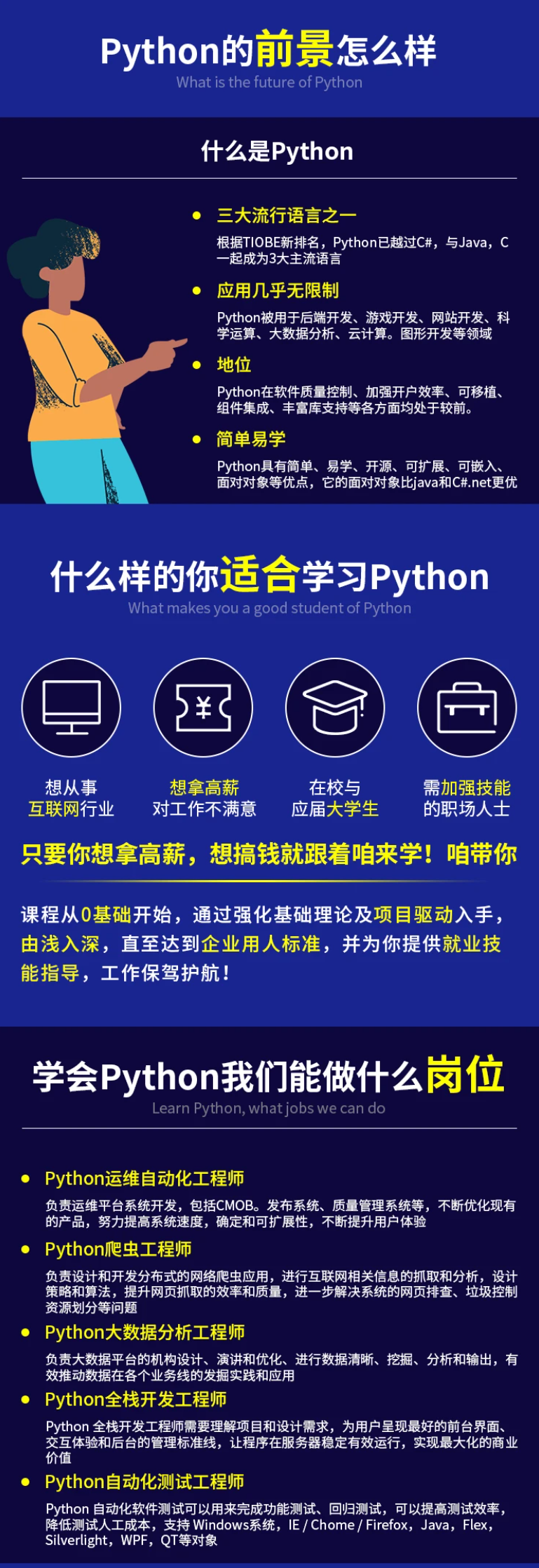
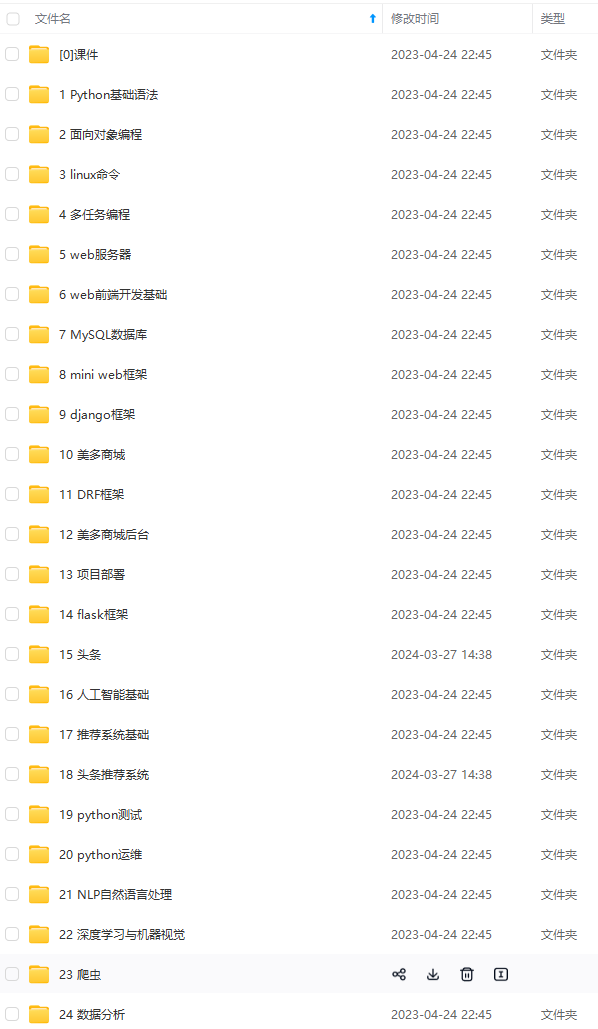
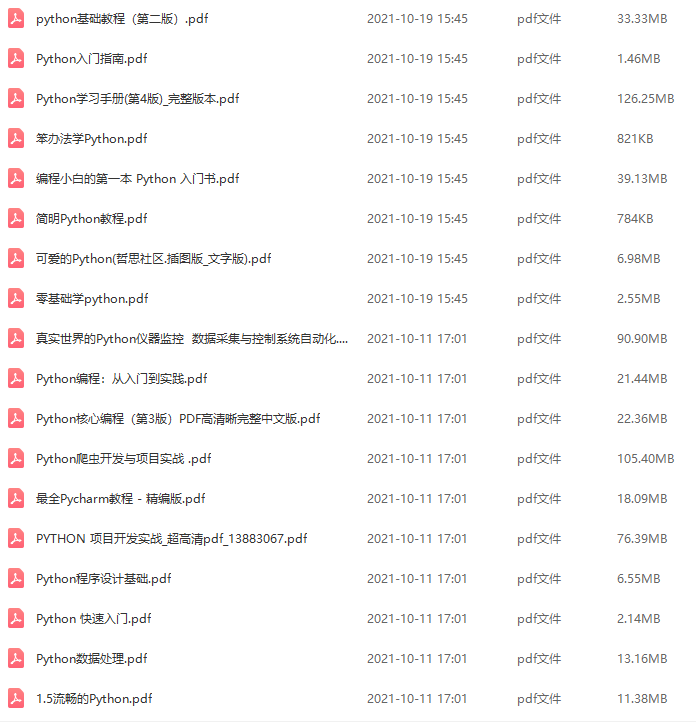
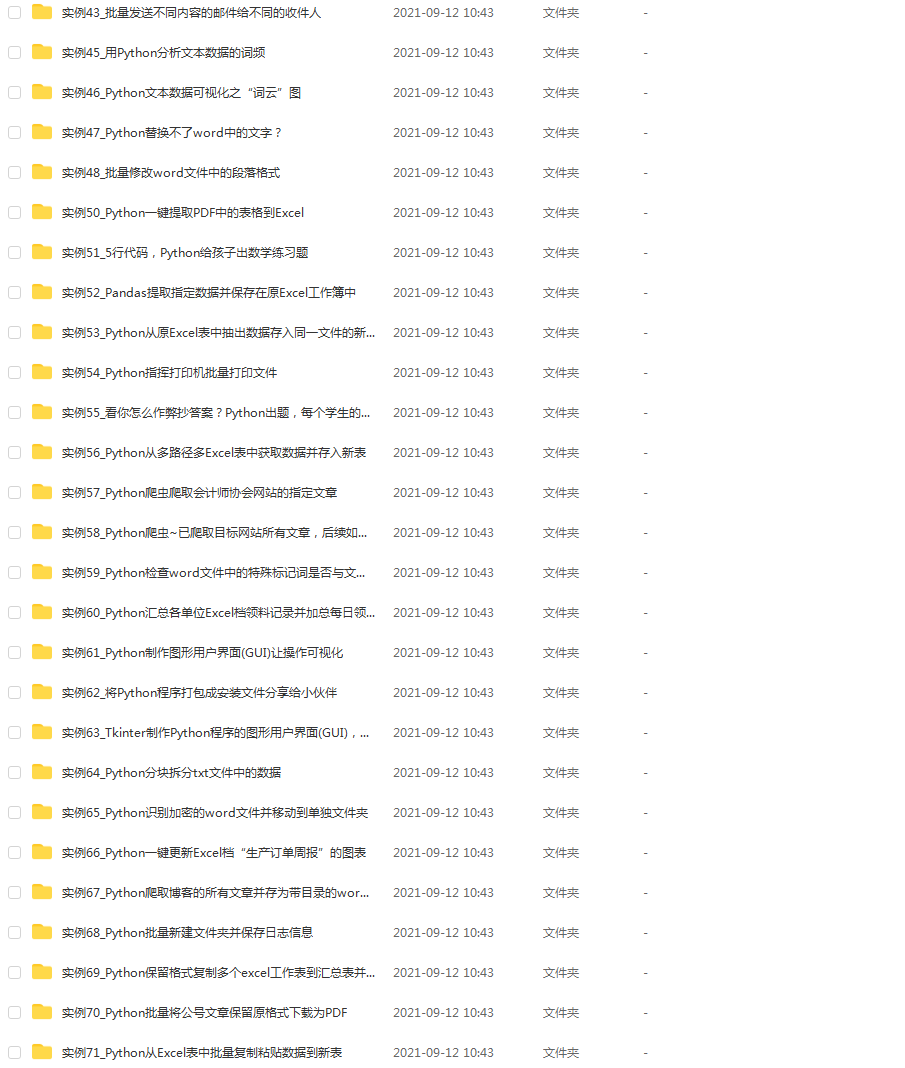
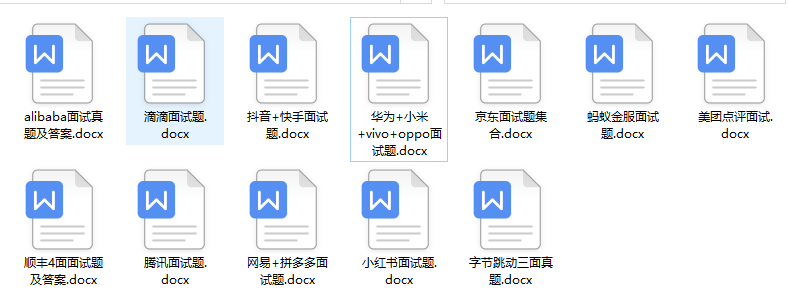

既有适合小白学习的零基础资料,也有适合3年以上经验的小伙伴深入学习提升的进阶课程,基本涵盖了95%以上Python开发知识点,真正体系化!
由于文件比较大,这里只是将部分目录大纲截图出来,每个节点里面都包含大厂面经、学习笔记、源码讲义、实战项目、讲解视频,并且后续会持续更新
如果你觉得这些内容对你有帮助,可以添加V获取:vip1024c (备注Python)

文末有福利领取哦~
👉一、Python所有方向的学习路线
Python所有方向的技术点做的整理,形成各个领域的知识点汇总,它的用处就在于,你可以按照上面的知识点去找对应的学习资源,保证自己学得较为全面。
👉二、Python必备开发工具

👉三、Python视频合集
观看零基础学习视频,看视频学习是最快捷也是最有效果的方式,跟着视频中老师的思路,从基础到深入,还是很容易入门的。
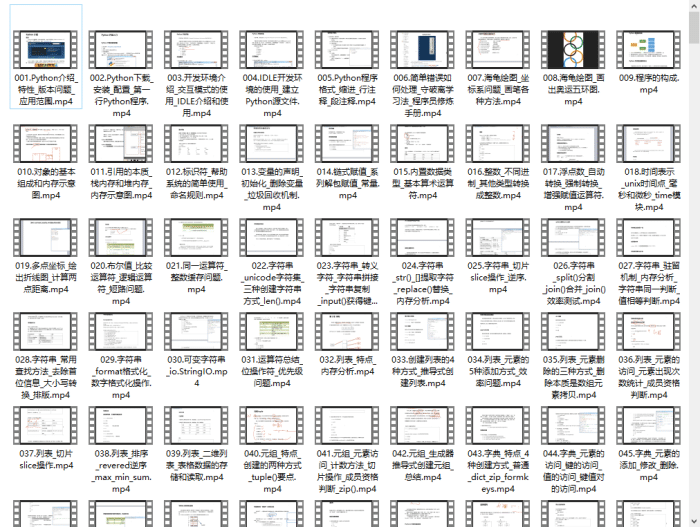
👉 四、实战案例
光学理论是没用的,要学会跟着一起敲,要动手实操,才能将自己的所学运用到实际当中去,这时候可以搞点实战案例来学习。(文末领读者福利)

👉五、Python练习题
检查学习结果。
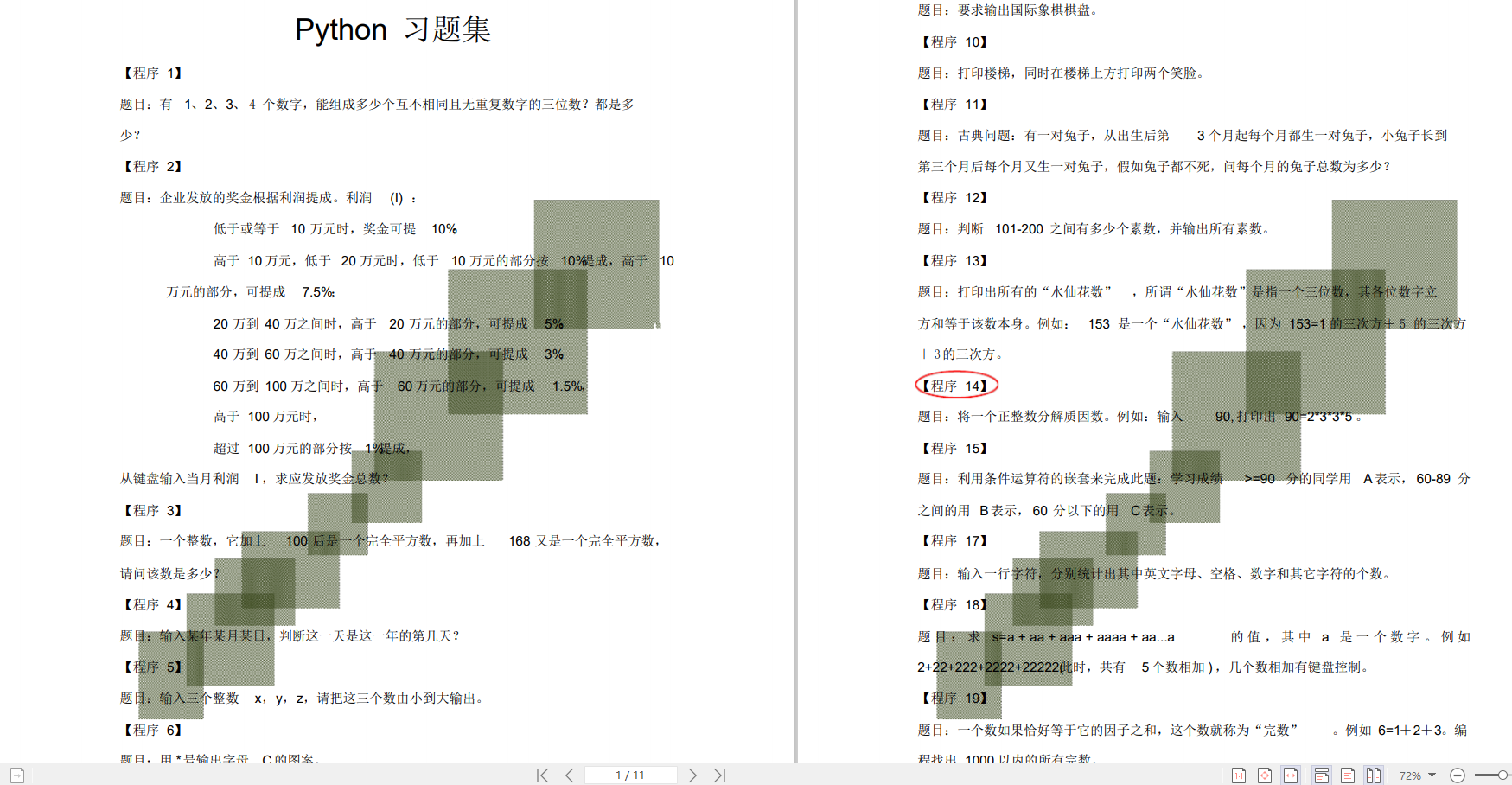
👉六、面试资料
我们学习Python必然是为了找到高薪的工作,下面这些面试题是来自阿里、腾讯、字节等一线互联网大厂最新的面试资料,并且有阿里大佬给出了权威的解答,刷完这一套面试资料相信大家都能找到满意的工作。
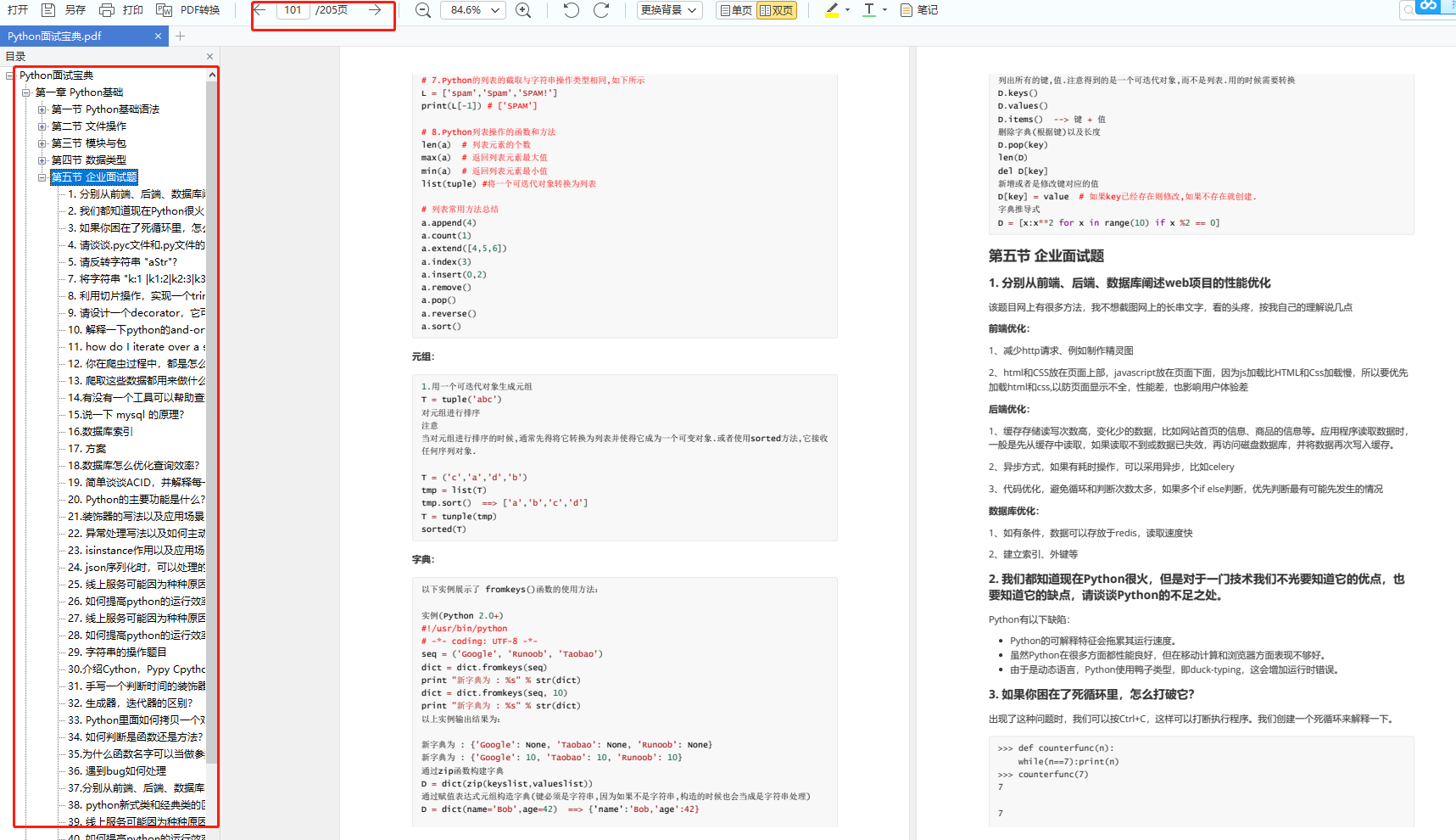
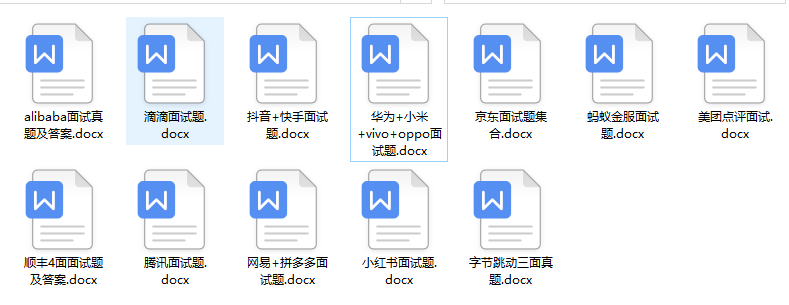
👉因篇幅有限,仅展示部分资料,这份完整版的Python全套学习资料已经上传
👉一、Python所有方向的学习路线
Python所有方向的技术点做的整理,形成各个领域的知识点汇总,它的用处就在于,你可以按照上面的知识点去找对应的学习资源,保证自己学得较为全面。
👉二、Python必备开发工具

👉三、Python视频合集
观看零基础学习视频,看视频学习是最快捷也是最有效果的方式,跟着视频中老师的思路,从基础到深入,还是很容易入门的。

👉 四、实战案例
光学理论是没用的,要学会跟着一起敲,要动手实操,才能将自己的所学运用到实际当中去,这时候可以搞点实战案例来学习。(文末领读者福利)

👉五、Python练习题
检查学习结果。

👉六、面试资料
我们学习Python必然是为了找到高薪的工作,下面这些面试题是来自阿里、腾讯、字节等一线互联网大厂最新的面试资料,并且有阿里大佬给出了权威的解答,刷完这一套面试资料相信大家都能找到满意的工作。


👉因篇幅有限,仅展示部分资料,这份完整版的Python全套学习资料已经上传






















 2074
2074











 被折叠的 条评论
为什么被折叠?
被折叠的 条评论
为什么被折叠?








